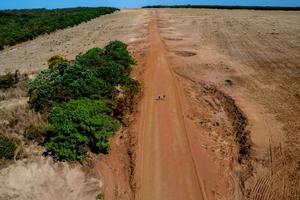More than 2,100 properties across the U.S. enrolled in the National Flood Insurance Program have flooded and been rebuilt more than 10 times since 1978, according to a new analysis of insurance data by the Natural Resources Defense Council (NRDC). One home in Batchelor, Louisiana has flooded 40 times over the past four decades, receiving $428,379 in insurance payments. More than 30,000 properties in the program, run by the Federal Emergency Management Agency, have flooded multiple times over the years. Those homes, known as “severe repetitive loss properties,” make up just 0.6 percent of federal flood insurance policies. But they account for 10.6 percent of the program’s claims — totaling $5.5 billion in payments.
The new data illustrates the serious problems facing the nation’s flood insurance program. The National Flood Insurance Program (NFIP), which currently provides policies for more than 5 million American homes, is $23 billion in debt following a string of major natural disasters over the last decades, including as Hurricanes Katrina and Sandy. Six U.S. states have experienced deadly flooding in the last 15 months, including Texas, South Carolina, and, most recently, Louisiana. Scientists and policy experts warn that as seas continue to rise and extreme weather becomes more frequent as a result of climate change, more properties will flood more often, causing further strain on an already financially stressed system.
“The way we have dealt with properties that are at a high risk of flooding is massively expensive, of limited utility at reducing the nation’s risk from flood damages, and is unworkable as a solution in the face of sea level rise and rising risk of flooding due to climate change,” said Rob Moore, a flood policy analyst at the NRDC, which obtained the records from FEMA using a Freedom of Information Act request.
Of the 30,000 homes analyzed by the NRDC, the average cumulative payout per property as a result of repeated flooding was $181,444. Nearly half of these repetitive loss properties have been paid more in flood insurance money than their houses are worth, the NRDC found.
Part of the problem, Moore said, is that the NFIP only requires that structures damaged more than 50 percent be rebuilt in a way that reduces their future flood risk. The program also doesn’t consider previous flood damage when assessing claims. According to the FEMA data, 75 percent of the 30,000 owners of repetitive loss properties have never gotten money or taken steps to reduce their flood risk, such as elevating the home.
Two weeks after an estimated 6.9 trillion gallons of rain fell in Louisiana — killing 13 people, displacing tens of thousands of others, and destroying some 60,000 houses — floodwaters are still receding, and families in some of the state’s hardest-hit parishes are just beginning the process of rebuilding their lives and homes. The storm is being called the worst U.S. natural disaster since Hurricane Sandy in 2012, and is being cited in the media as a prime example of climate change-related extreme weather.
According to FEMA records, Louisiana homeowners with flood insurance have poor track records when it comes to preparing for the next storm. The state leads the nation in severe repetitive loss properties, with more than 7,200 of the NFIP’s 30,000 multi-flood homes. Since 1978, these Louisiana houses have received $1.22 billion in flood insurance payments — 22 percent of all repetitive loss claims, according the NRDC.
Map of the National Flood Insurance Program's 30,000 severe repetitive loss properties, using the zip codes given for each policy. NRDC
“We need to change the emphasis of the NFIP from a rebuilding program to a risk mitigation program,” said Moore. “It currently addresses people’s short-term need to get their life back in order, not the long-term risk.”
But the recent Louisiana flooding highlights another major issue with flood insurance in the face of climate change: Only homes in designated floodplains are required by federal law to hold policies, and in many regions of the country, these maps haven’t been updated for decades. In Louisiana, only about 20 percent of homes have flood insurance.
Louisiana Gov. John Bel Edwards told the New Orleans Times-Picayune that there is some financial assistance available for homeowners without insurance, but that “it is limited and it is not automatic.”
“If you look at our future flood risk, at how climate change will impact the U.S., you realize this is not a bill we can afford to pay,” said Moore.
—Written by Katherine Bagley, the web editor of Yale Environment 360




